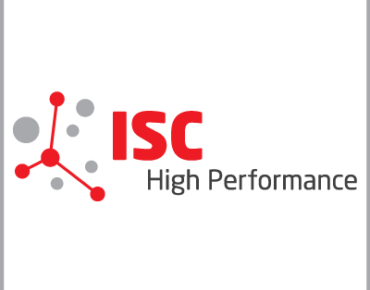ISC Deep Learning Day: New Computing & Algorithmic Paradigms for Industry and Science

Deep Learning Day, an all-day series of sessions at ISC this week in Frankfurt, looks to offer some of the conference’s most compelling discussions for the excellent reason that deep learning itself is one of – if not the – most compelling applications of advanced scale computing, pushing the frontiers of technological capabilities for both the industrial/commercial and traditional HPC sectors. According to the co-chair of Deep Learning Day (Wednesday, June 21), the agenda is split between science and commercial subject matters with the objective of connecting the two camps.
The proliferation of successful deep learning use cases has triggered a race to build and train larger artificial neural networks comprised of thousands of layers and weights, that ingest and process ever-larger amounts of training data and that enable computers to solve increasingly complex tasks. The result: deep learning at scale has become an HPC problem, requiring massive data throughput.
Sessions at Deep Learning Day will take aim at the most perplexing, daunting deep learning problems in the industrial and scientific realms. For example, much of the industrial portion of the day will focus on advances in autonomous driving, with discussions led by BMW, Intel, Mobileye and Bosch. Of particular interest will be developments around enabling self-driving vehicles to become continually smarter by learning from other autonomous vehicles within a given neural network.
The challenge, Deep Learning Day co-chair Dr. Damian Borth (director of the Deep Learning Competence Center at the German Research Center for AI) told EnterpriseTech, is architecting the connection between the vehicle’s own computational capabilities and a centralized HPC system collecting data, and generating insights for other networked vehicles. What’s the proper balance between computing done by the car and the HPC system at the network hub? In short, how can autonomous cars become increasingly capable after customers have bought them?
Consider, for example, the most difficult ethical (and proverbial) hypothetical problems a self-driving car would face, such as when confronted by a group of children crossing a cliffside road – drive off the cliff or…? Problems like this are trying the souls and technical capabilities of those within the deep learning community, and the correct answers, whatever they may be, need to be identified and shared with other vehicles.
“How can we take this information from all the thousands of cars out there, how can we use the sensory network to update our models over the air?” said Borth. “How can this car be connected such that it is continuously improving and getting every update?”
Borth said 5G network technology holds promise for supporting fleets of autonomous cars, which leads to the next challenge: “how are we able to compress those networks to make them available on those self driving cars? How are companies like BMW deciding how much computation can be done on the car and how much has to be done outside of the car?”
On the scientific side, morning sessions will examine how high performance GPU-based parallel frameworks are producing new research techniques for supervised learning, regression, semi-supervised learning and unsupervised learning in biology, medicine, physics and ecology. There also will be discussions around distillation, recurrent neural networks, deep reinforcement learning, and generative models that have the potential to simplify and accelerate scientific computing tasks.
Speakers will include managers from Nvidia, Lawrence Livermore National Lab, AMD, the University of Amsterdam and IBM Research/Zurich.











